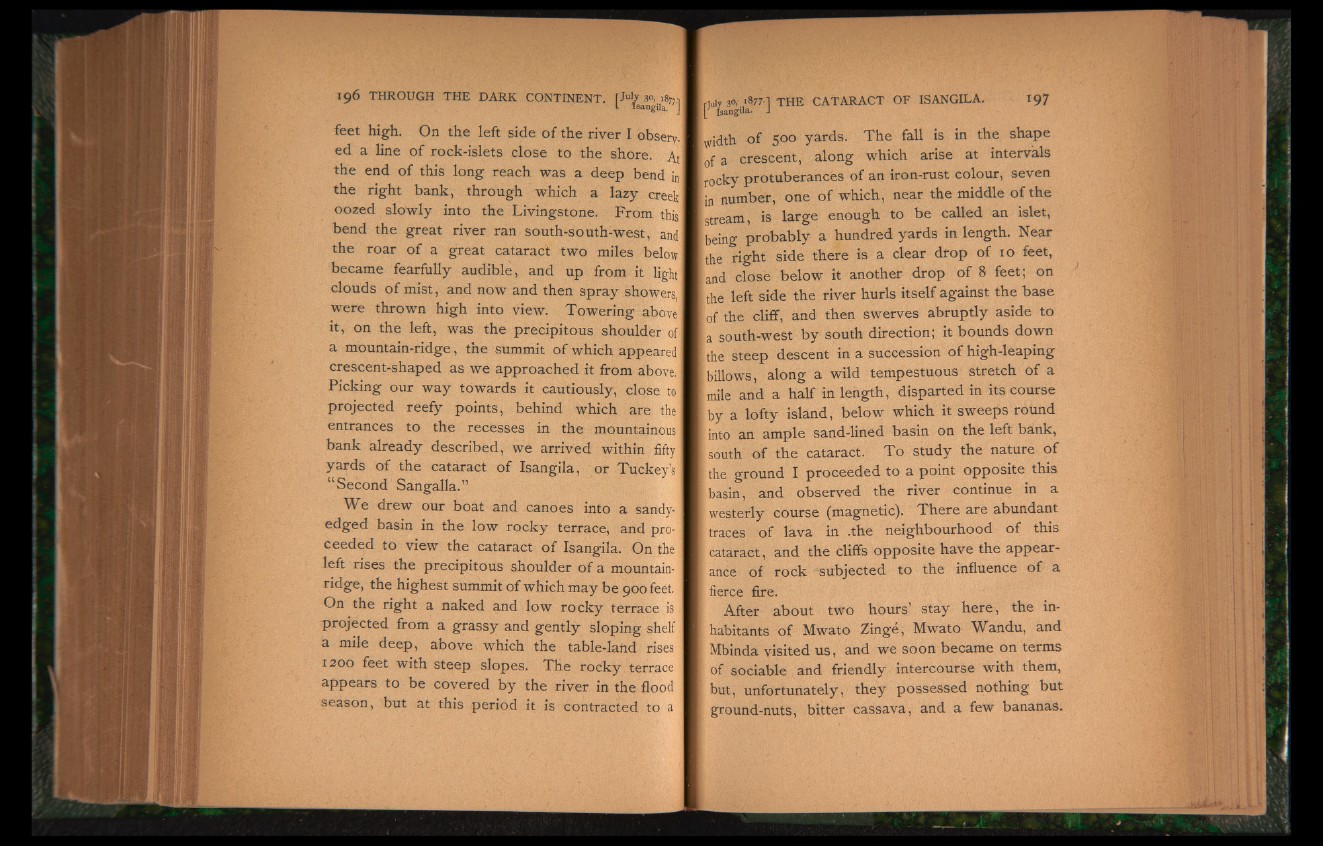
feet high. On the left side of the river I observ.
ed a line of rock-islets close to the shore. At
the end of this long reach was a deep bend in
the right bank, through which a lazy creek
oozed slowly into the Livingstone. From this
bend the great river ran south-south-west, and
the roar of a great cataract two miles below
became fearfully audible, and up from it light!
clouds of mist, and now and then spray showers J
were thrown high into view. Towering above
it, on the left, was the precipitous shoulder of
a mountain-ridge, the summit of which appeared
crescent-shaped as we approached it from above.
Picking our way towards it cautiously, close to
projected reefy points, behind which are the
entrances to the recesses in the mountainous
bank already described, we arrived within fifty
yards of the cataract of Isangila, or Tuckey’s
“ Second Sangalla.”
We drew our boat and canoes into a sandy-
edged basin in the low rocky terrace, and pro-
ceeded to view the cataract of Isangila. On the i
left rises the precipitous shoulder of a mountain-
ridge, the highest summit of which may be 900 feet. !
On the right a naked and low rocky terrace is
projected from a grassy and gently sloping shelf
a mile deep, above which the table-land rises
1200 feet with steep slopes. The rocky , terrace
appears to be covered by the river in the flood
season, but at this period it is contracted to a
rjuly 3°> l877-l THE CATARACT OF ISANGILA. i g j
[ Isangila. J
width of 500 yards. The fall is in the shape
0f a crescent, along which arise at intervals
rocky protuberances of an iron-rust colour, seven
in number, one of which, near the middle of the
stream, is large enough to be called an islet,
¡being probably a hundred yards in length. Near
the right side there is a clear drop of 10 feet,
and close below it another drop of 8 feet; on
the left side the river hurls itself against the base
of the cliff, and then swerves abruptly aside to
a south-west by south direction; it bounds down
the steep descent in a succession of high-leaping
[billows, along a wild tempestuous stretch of a
mile and a half in length, disparted in its course
[by a lofty island, below which it sweeps round
[ into an ample sand-lined basin on the left bank,
[south of the cataract. To study the nature of
i the ground I proceeded to a point opposite this
basin, and observed the river continue in a
I westerly course (magnetic). There are abundant
traces of lava in .the neighbourhood of this
cataract, and the cliffs opposite have the appearance
of rock subjected to the influence of a
; fierce fire.
After about two hours’ stay here, the in-
I habitants of Mwato Zinge, Mwato Wandu, and
Mbinda visited us, and we soon became on terms
: of sociable and friendly intercourse with them,
but, unfortunately, they possessed nothing but
ground-nuts, bitter cassava, and a few bananas.